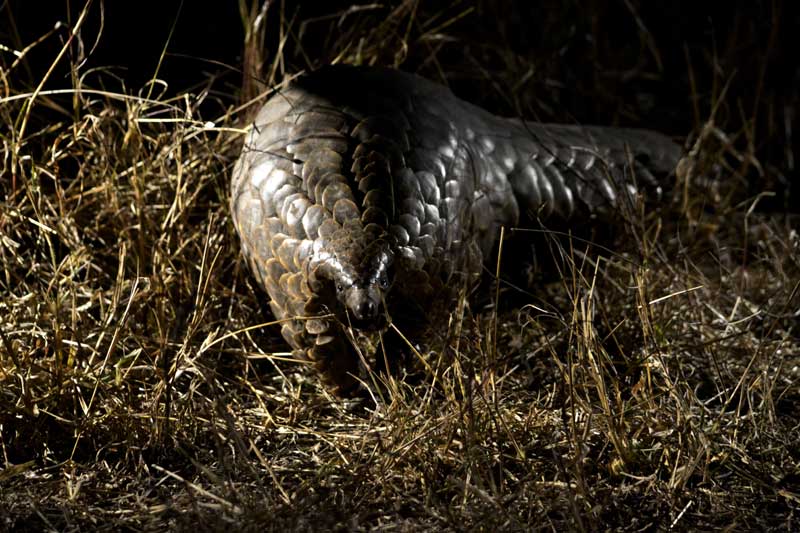The pangolin (scaly anteater) is one of the most critically endangered species in the world. This prehistoric looking creature is immensely shy and is rarely seen. They have a scaly, protective armour that shields them from danger, and when under threat they tend to curl up in a defensive ball position. They’re active at night and this is when they feed, so even when spotted there’s only a slim chance of seeing a pangolin on the move! Renown Sabi Sand Game Reserve has an abundance of leopard sightings, but recently there have been a number of rare pangolin sightings in the area – in particular at Umkumbe Safari Lodge. One of their rangers, Nadia Bester managed to photograph a pangolin on the move.
It is estimated that over 100, 000 pangolins are captured on an annual basis for their scales and meat – scales are mistakingly though to cure acne and cancer; none of which is true. In Africa and Asia, there are 8 species of pangolin, all of which are endangered. This is why guests and rangers always make a fuss when spotting one in the wild! Spotting one is worthy of celebration.
If you’ve never heard of a pangolin or don’t know much about them, here are five interesting facts about these solitary nocturnal mammals:
1. The pangolin is often mistaken for being a reptile but is, in fact, part of the Manidae family whose members include anteaters, armadillos and sloths.
2. When under threat, a pangolin will become defensive and “play dead”. They do this by rolling into a ball. The scales on their body are incredibly sharp and will slice through an enemy’s skin like a knife. If approached, a pangolin may lash out with its tale and cut their enemy.
3. The scales are not their only defence mechanism. Pangolins, much like honey badgers and skunks, can emit a noxious smelling gas that drives predators away.
4. A pangolin feasts on ants, termites, insects and other small bugs. We often find them hovering around close to termite mounds, which provide an easy source of food.
5. A pangolin has an extremely long tongue covered in a sticky substance that traps food sources. To access termites, grubs and other insects, a pangolin must first dig up the earth and rip off bark. To do this, they use their curved claws which act as blades.
All the below images were taken by Nadia Bester, a ranger from Umkumbe Safari Lodge.






